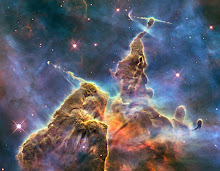
Woman on the edge of time by Marge Piercy (1976)
Parallel universes: universes that are separated from each other by a single quantum event.
Parallel universes exist. This I know because in another world there was once a dinner party. The wood fire warmed the room. From the hooks at the fireplace hung two pots of spicy baingan bharta and palak ka saag. All part of our vegan feast prepared by S. Though he did laugh at the fact that he was cooking Indian food for us.
The giant ficus plant that concealed the bathtub from the rest of the room, every now and then, dropped a yellowed leaf. We sat around the wooden dining table, eating, drinking and talking. Roaming from the coast of Brittany to the mountain villages of Uttarakhand. Then M said, “Lets play a game. One by one we shall talk about a book we have recently read or are presently reading.” And we said how does the game go. And she said, “That’s it. We talk about the book we have read or are reading.” And everyone laughed. But what a game it was! What a treasure it revealed.
This could have been another one of those stories that I conjure out of nothing. However, I have that book in my hands. So it was real. But that dinner party appears to exist in a time and age far removed from present reality. So, did it really happen? Or, was it just a dream? Well it was simply an excursion into another world.
Woman on the Edge of Time also deals with such an excursion. Its main character Connie is poor, Hispanic, abused, labeled a sociopath and incarcerated in a mental asylum. But she is “receptive” to Luciente and the people of Mattapoisett living in 2137. People from a future world that would cease to exist if Connie isn’t able to change things in her present. Connie’s struggle to not get forced into a brain control operation mirrors the struggle that every human, with varying intensity, undertakes. The struggle against oppression. The struggle for beauty and truth. The struggle to exist. And that is what the story is about.
How one reads the story and what one takes away from this book depends largely on what one believes: on one’s ideological position. For this book challenges ideas regarding gender roles, racism, imperialism, consumerism, science and technology, and environment degradation. Is Connie insane or a victim of gender, ethnicity and economic disparity? How does one even define sanity? Can we truly have a society where everyone is equal no matter what gender, ethnicity or class? What would that mean for the one thing that sets women apart from men: childbearing? Is more science and more technology really our hope for salvation? At a more simplistically level, is all scientific research really guided by idealism? Is the agrarian, communal, gender neutral life of Mattapoisett the utopian just and equitable world we yearn for? Or is the totalitarian dystopia, the alternate that Mattapoisett is at war with, and Connie accidentally stumbles upon, our future reality?
“We can only know what we can truly imagine. Finally what we see comes from ourselves.” *
Postscript
It is often said that another world is possible. And it is often found that those who utter these words do so because they clearly see all the injustices that persist in our world. They see and feel them so clearly that in some other world they, immobilized by grief, horror and lack of faith in humans, would accept things without questioning. But instead they are often the most hopeful people. They think that change will come because they believe in the essential goodness of humans. And even if they fail, in the end they triumph simply because they tried. But above all they are truly happy. This I know because in another world I had dinner with them.
*Luciente to Connie in Woman on the Edge of Time.
(Afterthought on books: part 14)

















2 comments:
Awesome thought..and seems like a wonderful book..will look out for it. I m reading this book by Deepak Chopra, life after death, I was a wee bi wary in the beginning but it is turning out nice. What is real ? what is ethereal ? what is parallel ? where is that 6 year old you knew ? when you are not that 6 year old anymore..but is it to say that you you never were that 6 year old ? Some interesting insights into what we think is real and what we claim to be unreal. I enjoyed this.
Yes, reality is really very hard to define. And dwelling into our past and future reality will raise interesting insights.
Marge Piercy is brilliant...a true activist for social justice. 'Women on the Edge of Time' has been termed the birthplace of cyberpunk science fiction by none other than William Gibson.
Post a Comment